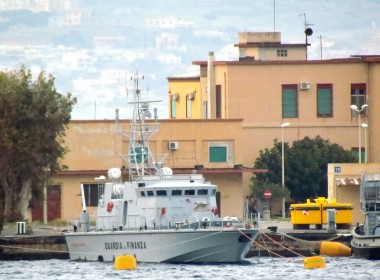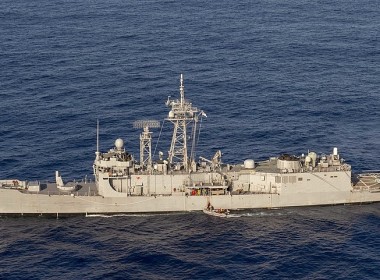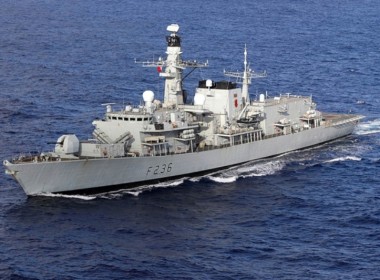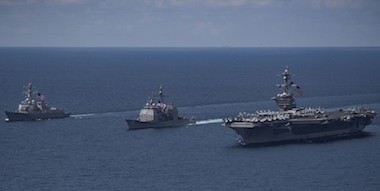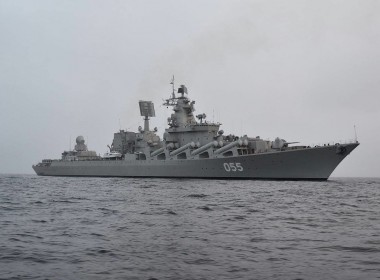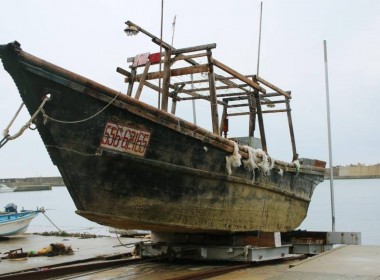FEATURE: Putting North Korea under pressure from seaward
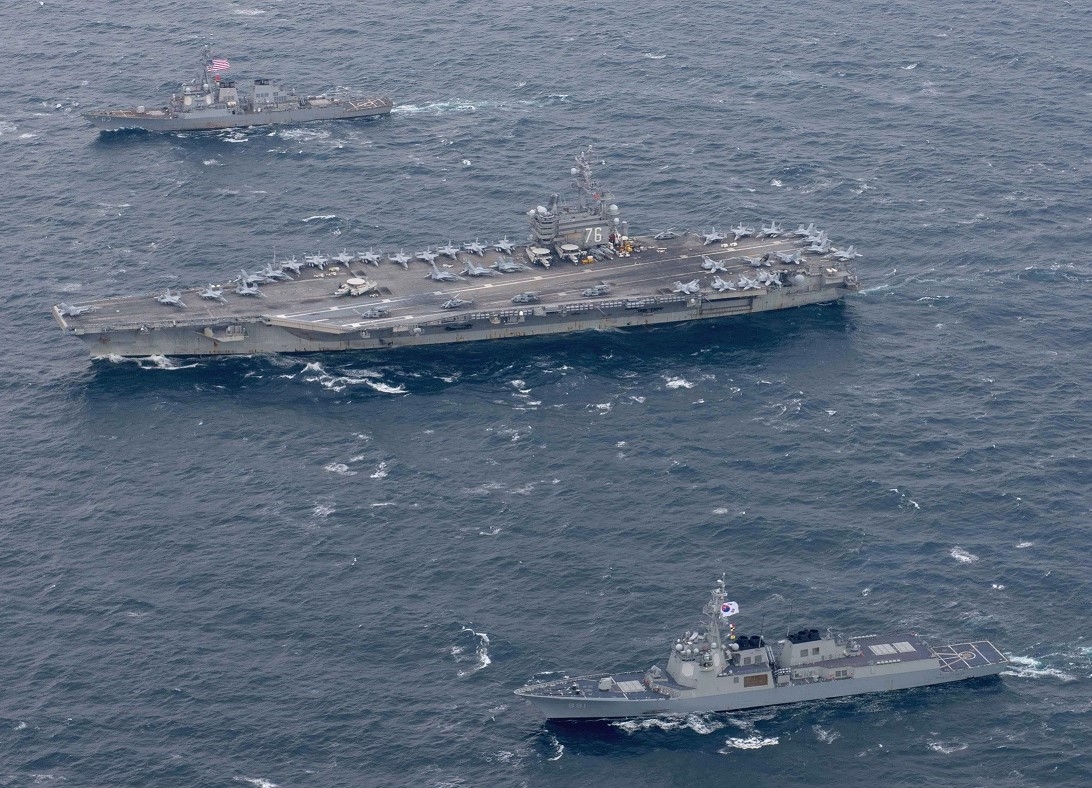
The past year has seen tension between Washington and Pyongyang soaring, as a result of continuing missile launches, and nuclear weapon testing, by the Democratic People’s Republic of Korea (DPRK), in defiance of UN-mandated sanctions. DPRK leader Kim Jong-un has even uttered threats to strike US military facilities on Guam.
The Americans have enacted a graduated response, including a joint exercise with US Navy 7th Fleet, and Japan Maritime Self Defence Force warships, and flights near DPRK airspace by US and South Korean bombers, maritime patrol, surveillance, air sampling and electronic intercept aircraft.
It is also worthy of note that, in April, Chinese and Russian warships conducted a joint exercise in the Yellow Sea
Now, the pressure has been ratcheted up, with hints from Washington that a full blockade of the DPRK might be in the offing, and joint US-Republic of Korea (South Korea) exercises, involving some 40 vessels, being conducted in the Sea of Japan and the Yellow Sea. The prime asset participating in these exercises is the US Navy’s 94,000-tonne nuclear powered aircraft carrier Ronald Reagan. The carrier’s 90-strong air group includes Super Hornet fighter bombers, Growler electronic warfare planes and Hawkeye airborne early warning aircraft.
Other participants include the US Navy Arleigh Burke-class destroyers Stethem and Mustin, and the Republic of Korea Navy’s (RoKN) advanced 11,000-tonne destroyer, Sejong the Great, which like the US destroyers is equipped with the Aegis combat system.
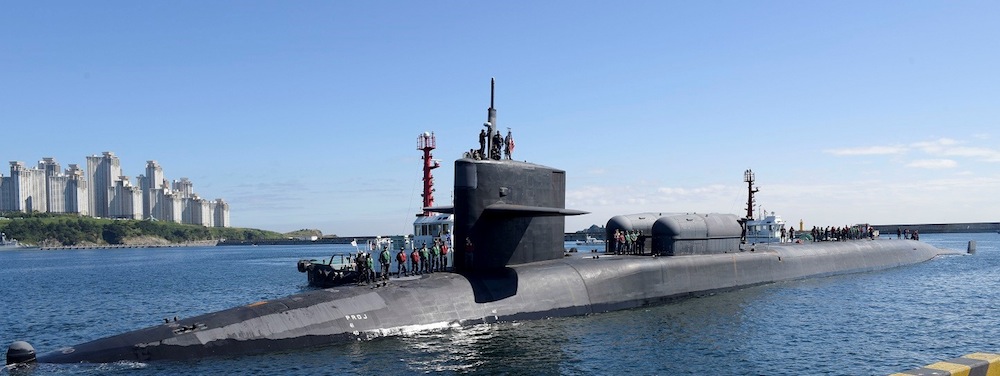
Coinciding with the exercises is the presence in the South Korean port of Busan of the US nuclear powered attack submarine Michigan, fitted with two highly visible Special Forces insertion and extraction pods.
Particularly relevant, although it has received little publicity, is the minewarfare phase of the exercises. Core vessels for this phase are the US Navy minehunters Chief and Pioneer, and the new RoKN stealth minelayer Nampo.
Some reports, furthermore, have indicated that the waters off the Korean Peninsular might soon be seeing a multi-national presence. According to the reports, two British warships, the Type 23 frigate Argyll (recently fitted with the latest Sea Ceptor Mach 3 air defence missile), and the Type 45 destroyer Diamond, have been earmarked for possible deployment to the region, while Canadian defence sources have confirmed that the Royal Canadian navy diesel electric attack submarine Chicoutimi has already, in an unprecedented move, been deployed to Asian waters.
Some analysts have also noted that Australia’s Defence Minister visited South Korea around the time that the Royal Australian Navy’s Indo-Pacific Endeavour 2017 Task Group embarked upon a scheduled three-month deployment.
In the event of hostilities, the vast but mainly obsolete DPRK Navy fleet, consisting mainly of coastal and middle water attack craft, would pose only a limited threat. American and allied commanders, though, will be wary of Pyongyang’s reputedly fairly effective 70-strong submarine force, which succeeded in sinking an RoKN corvette in 2010.


